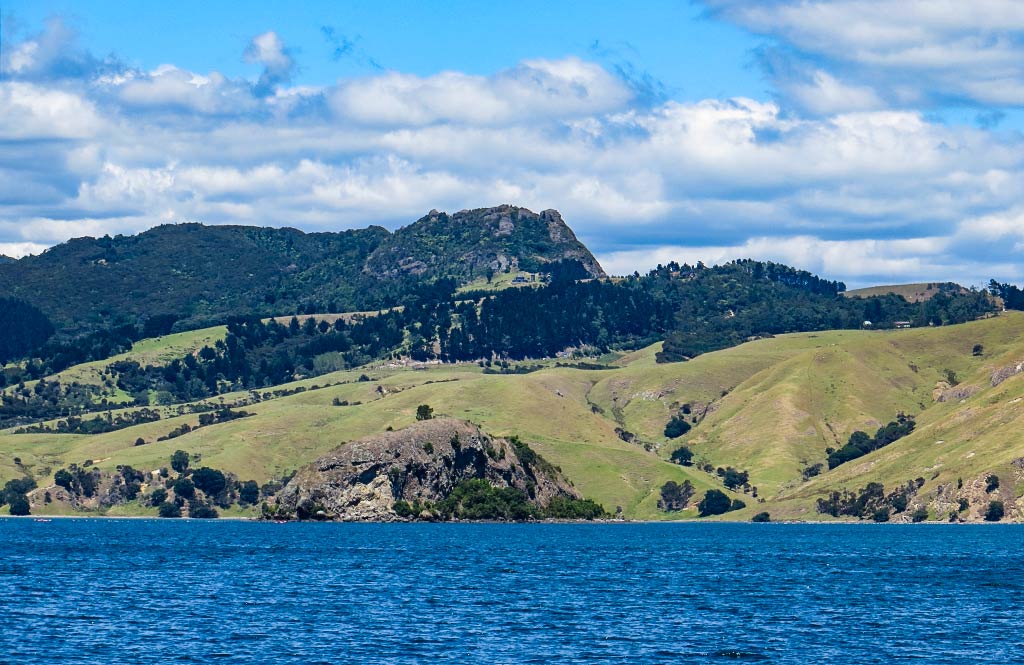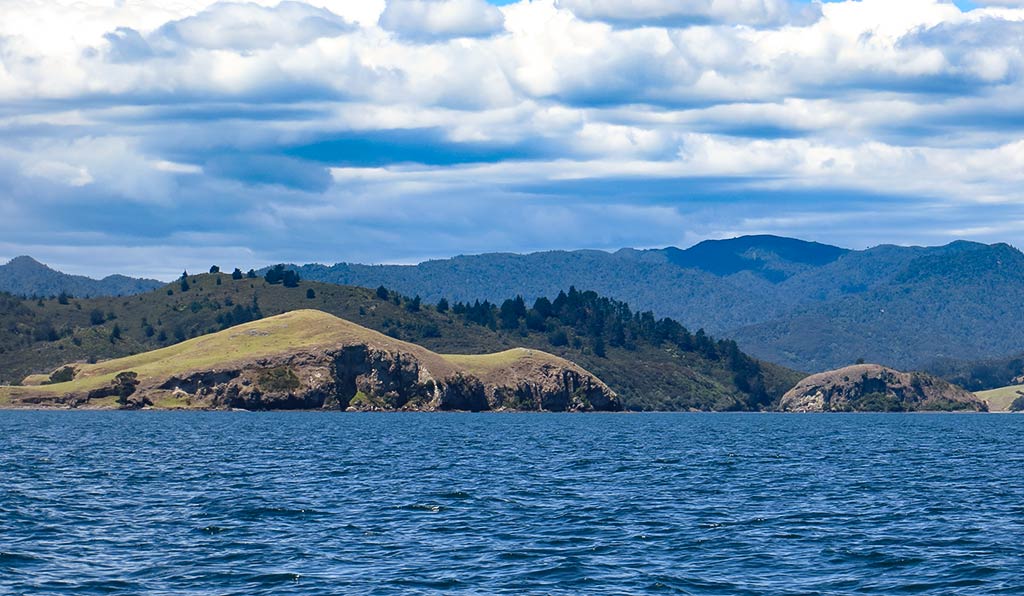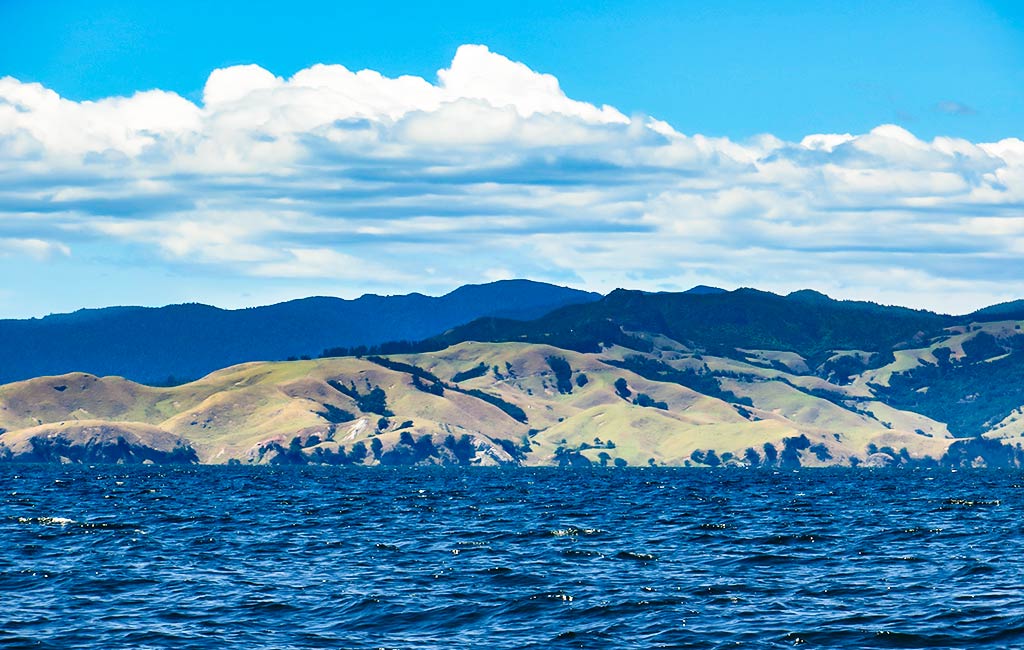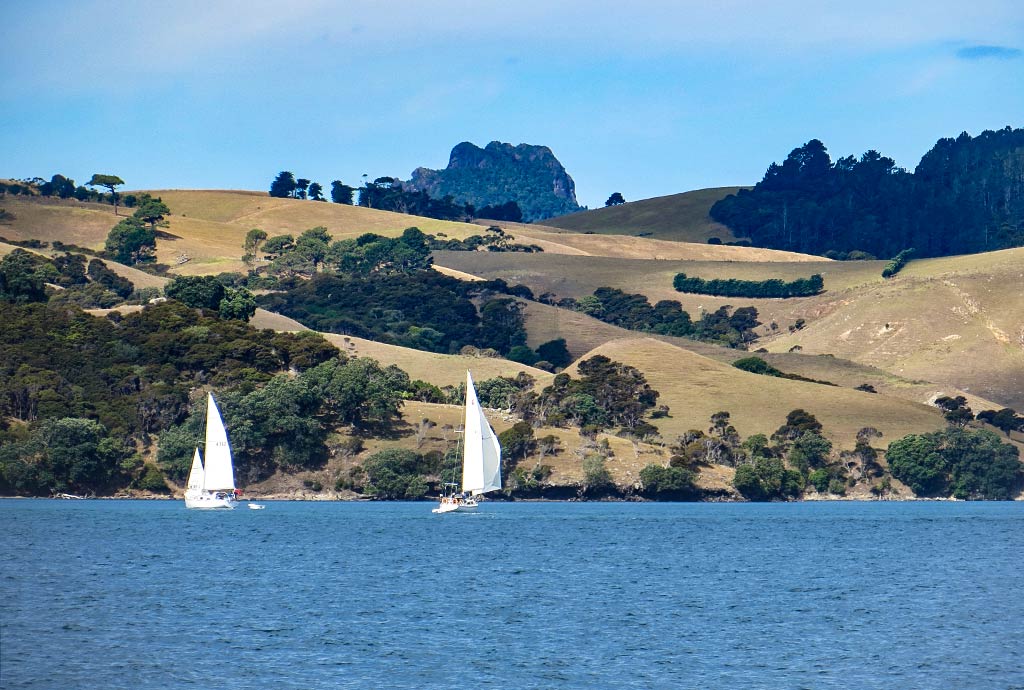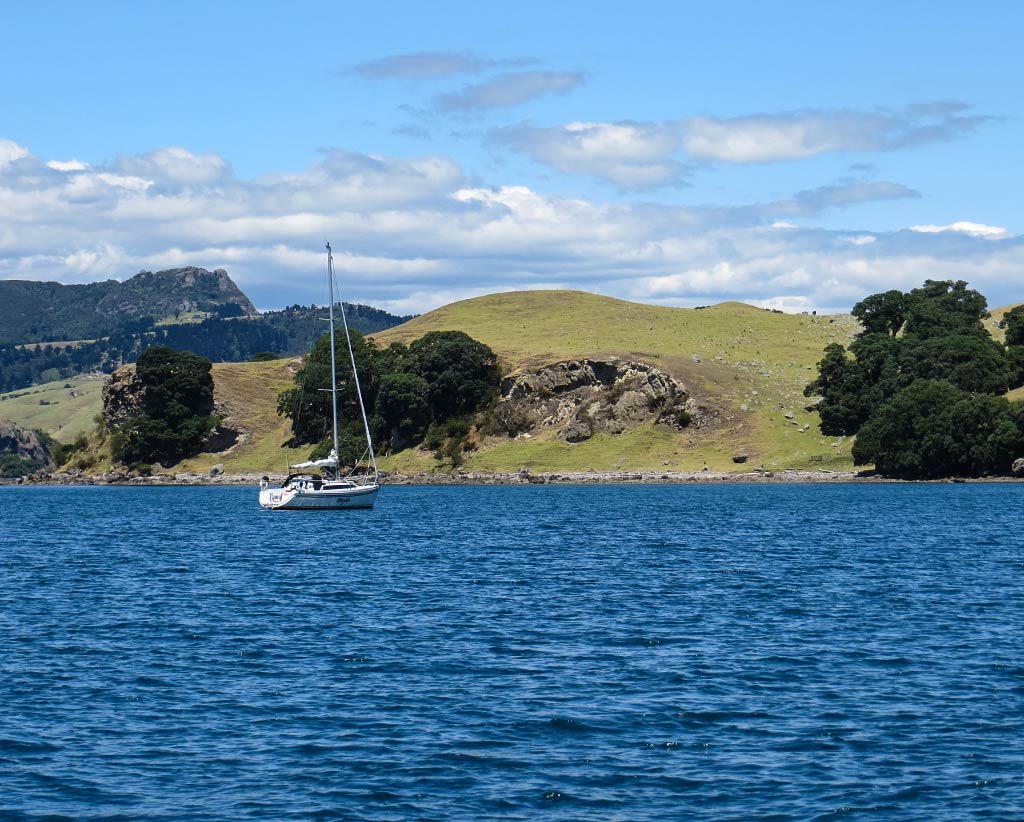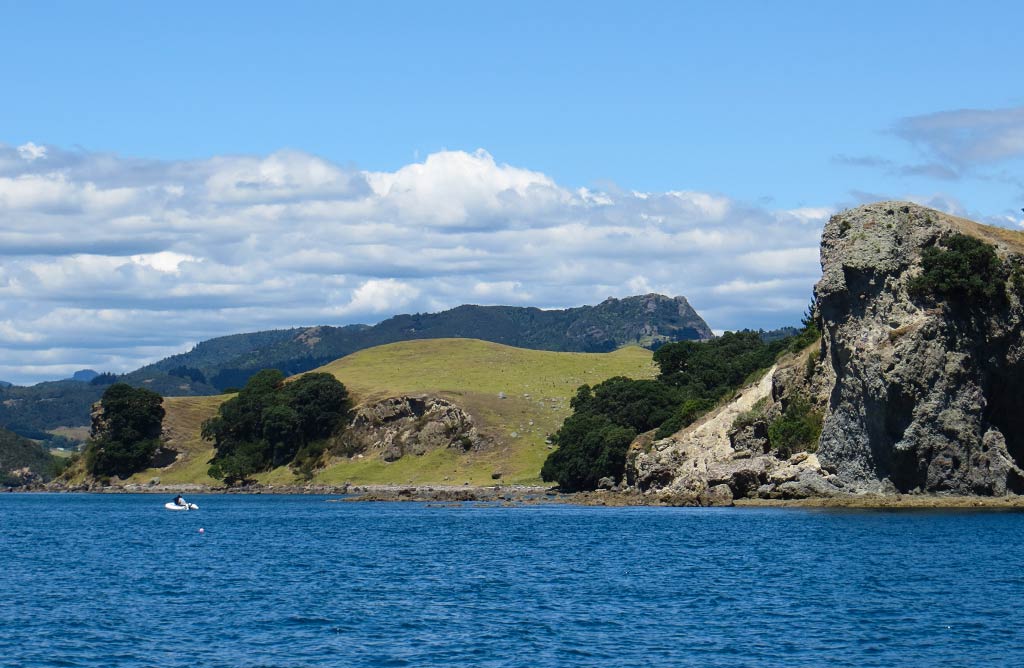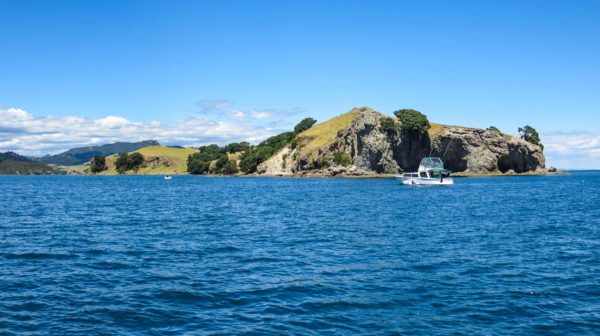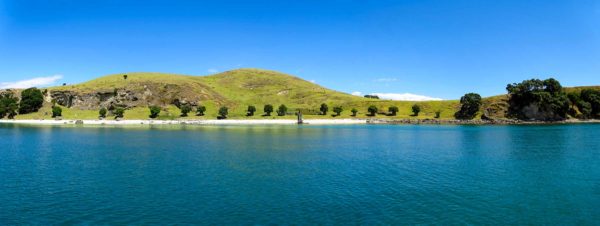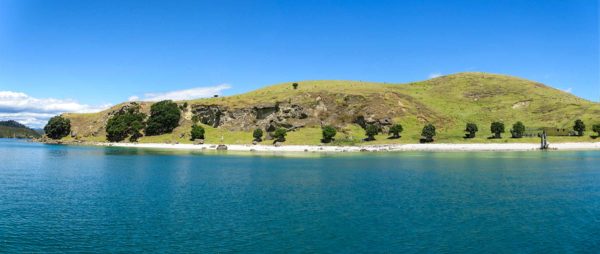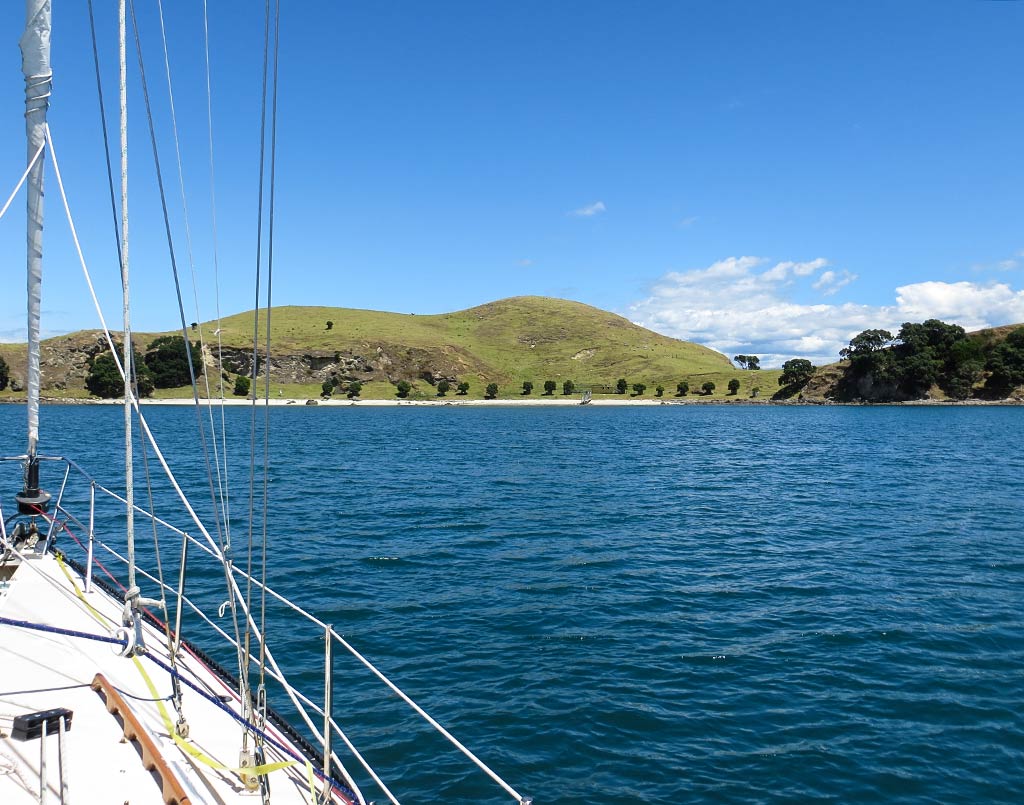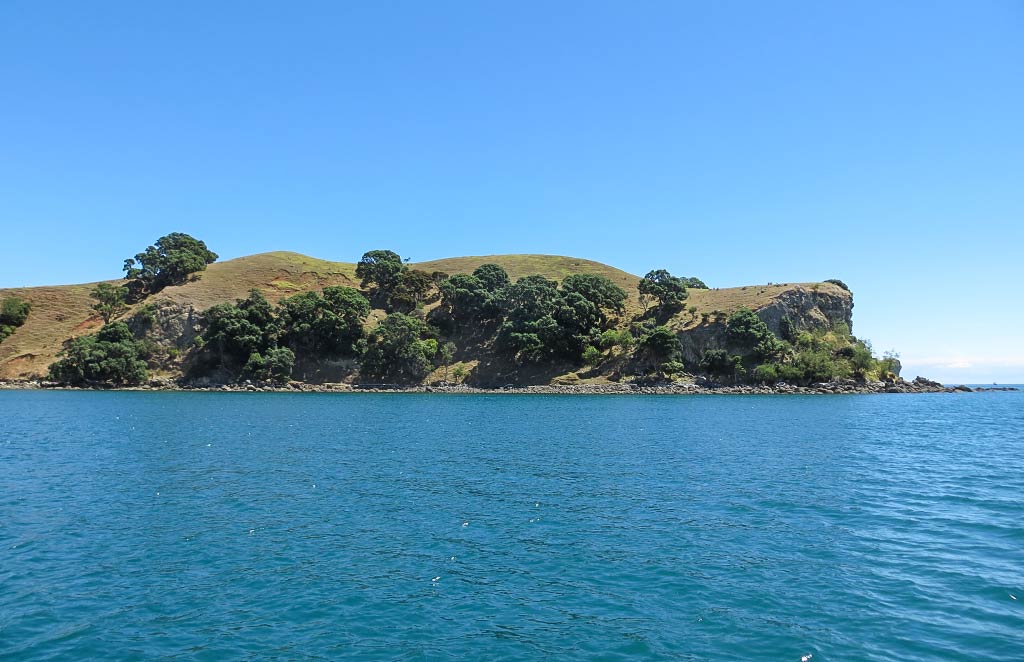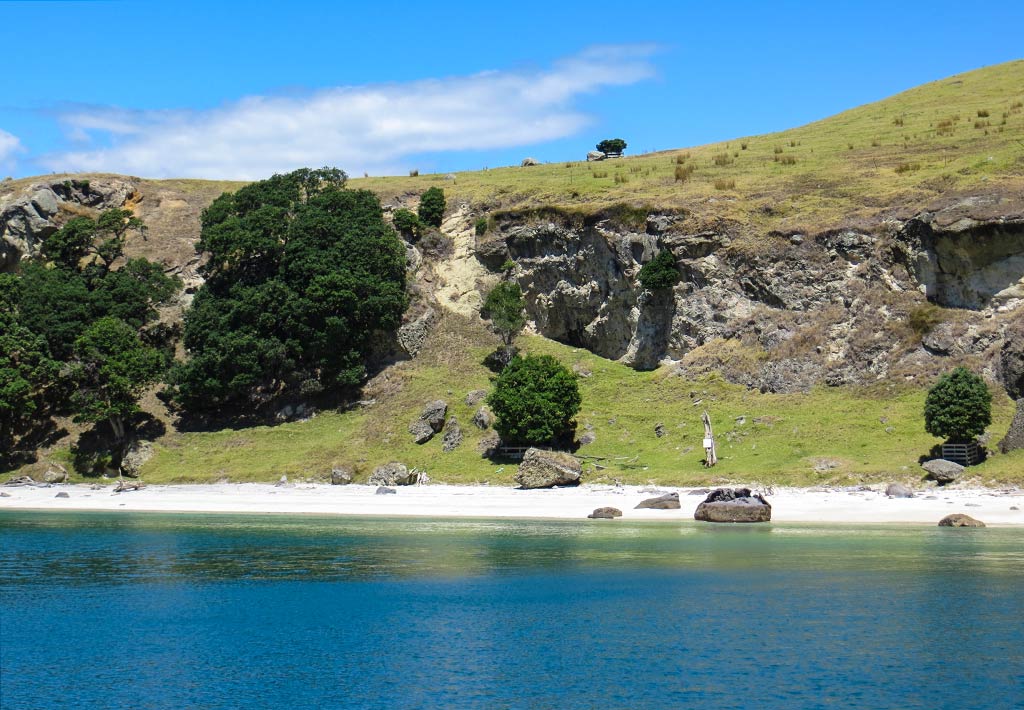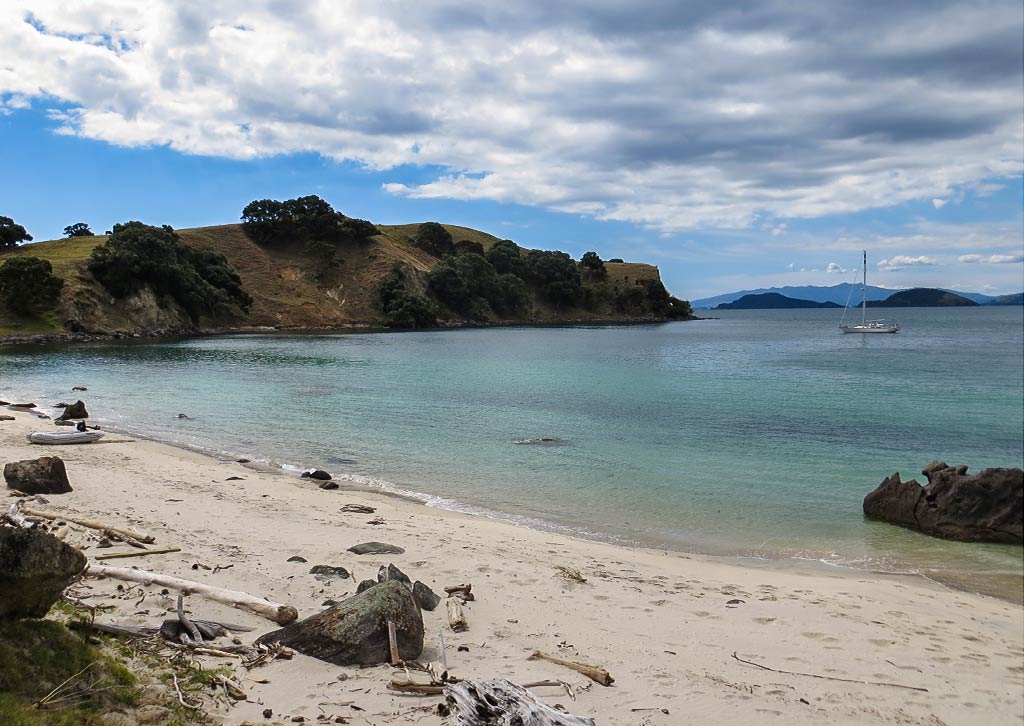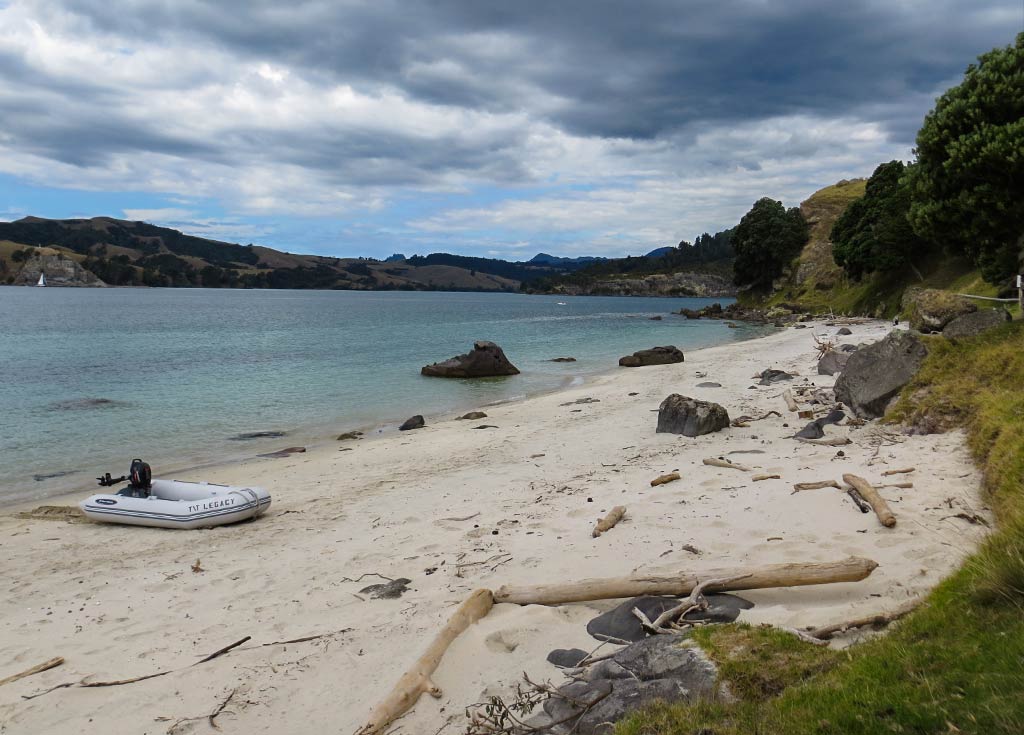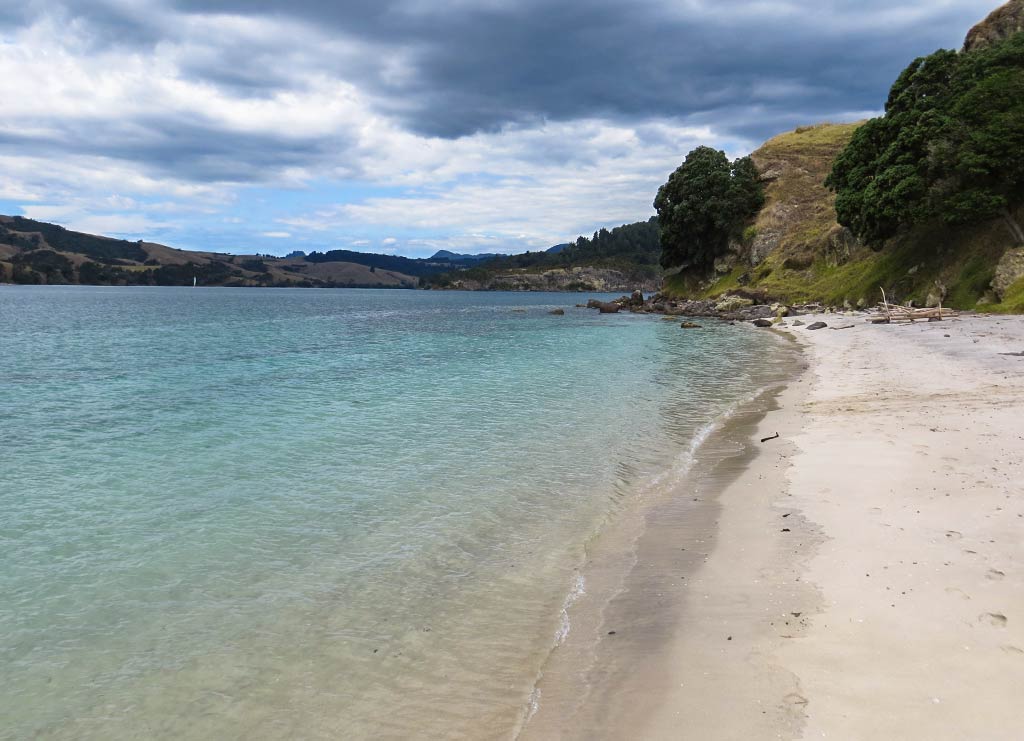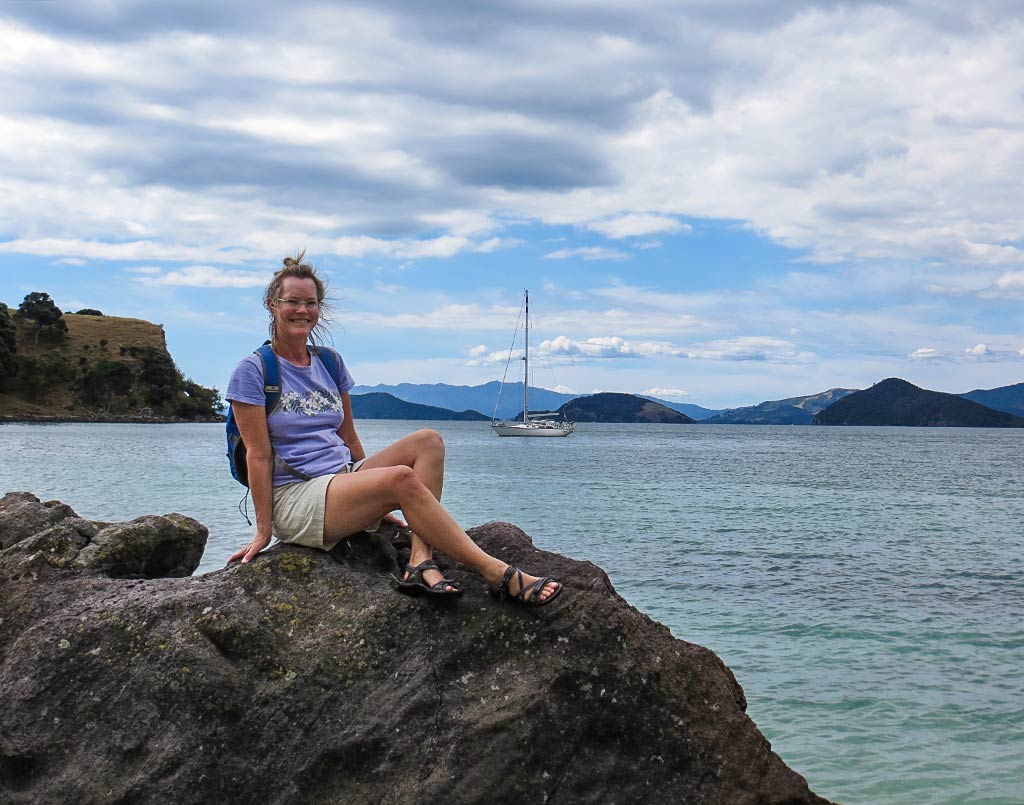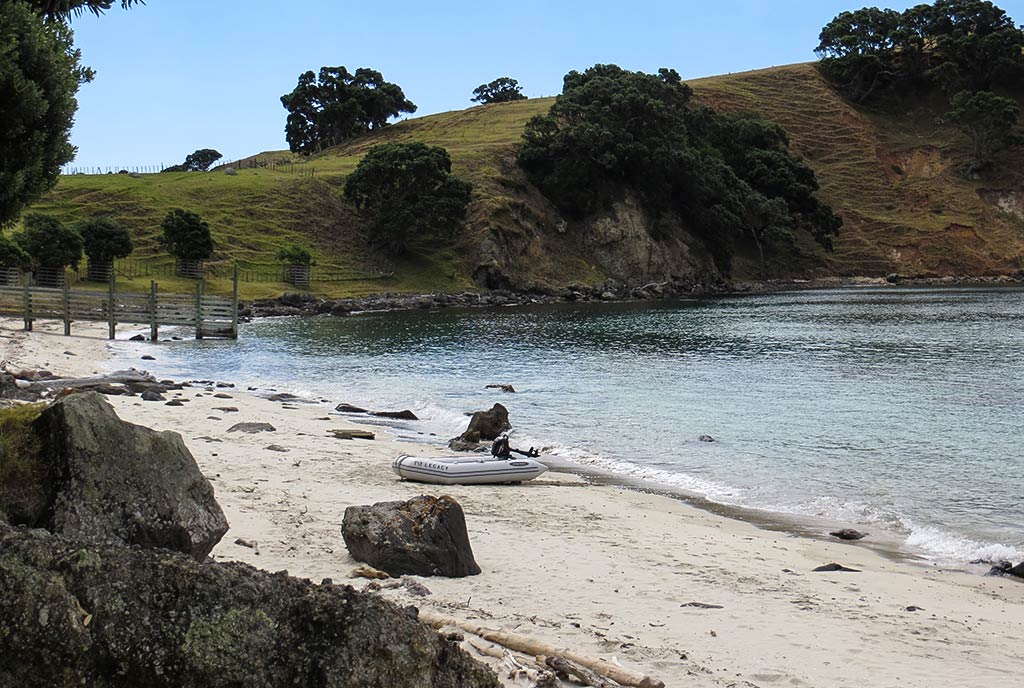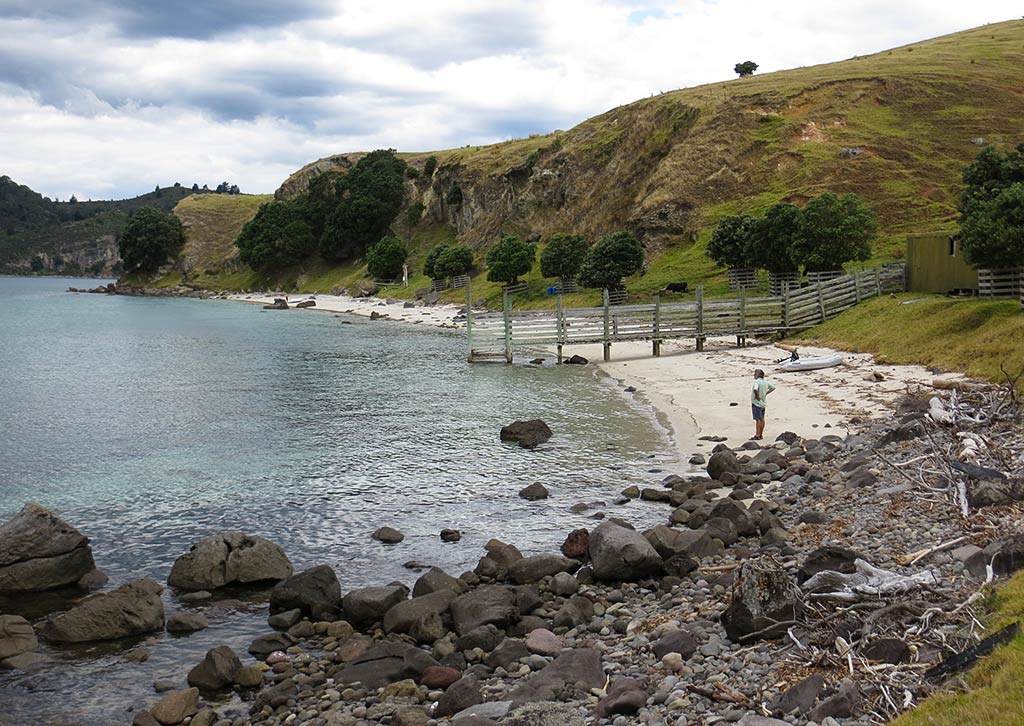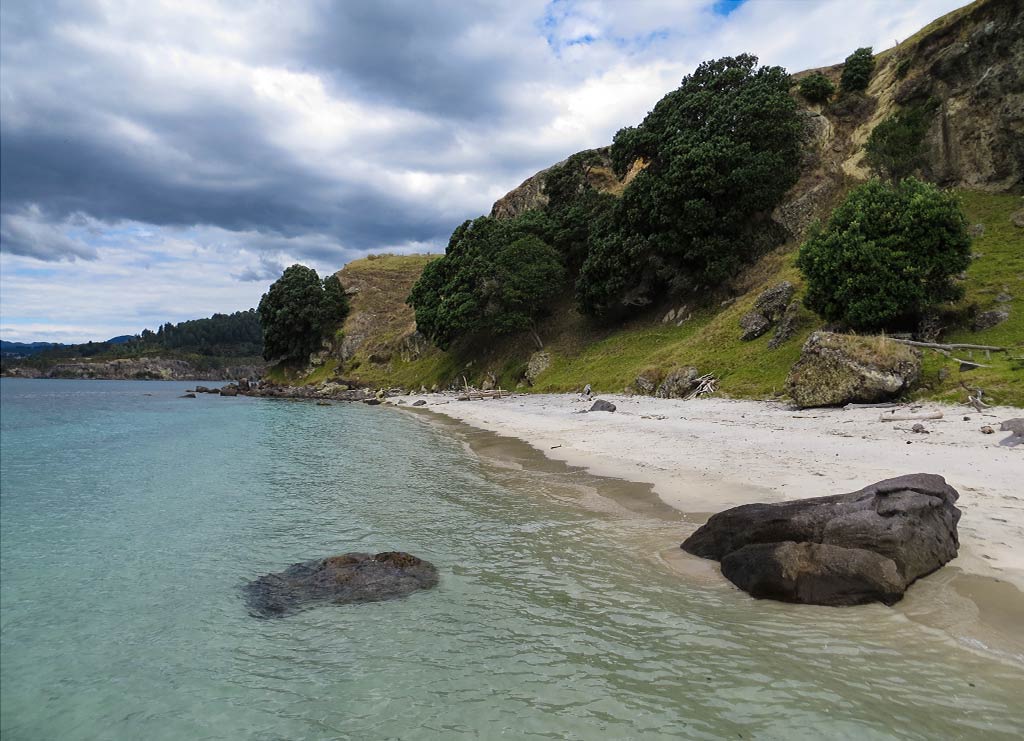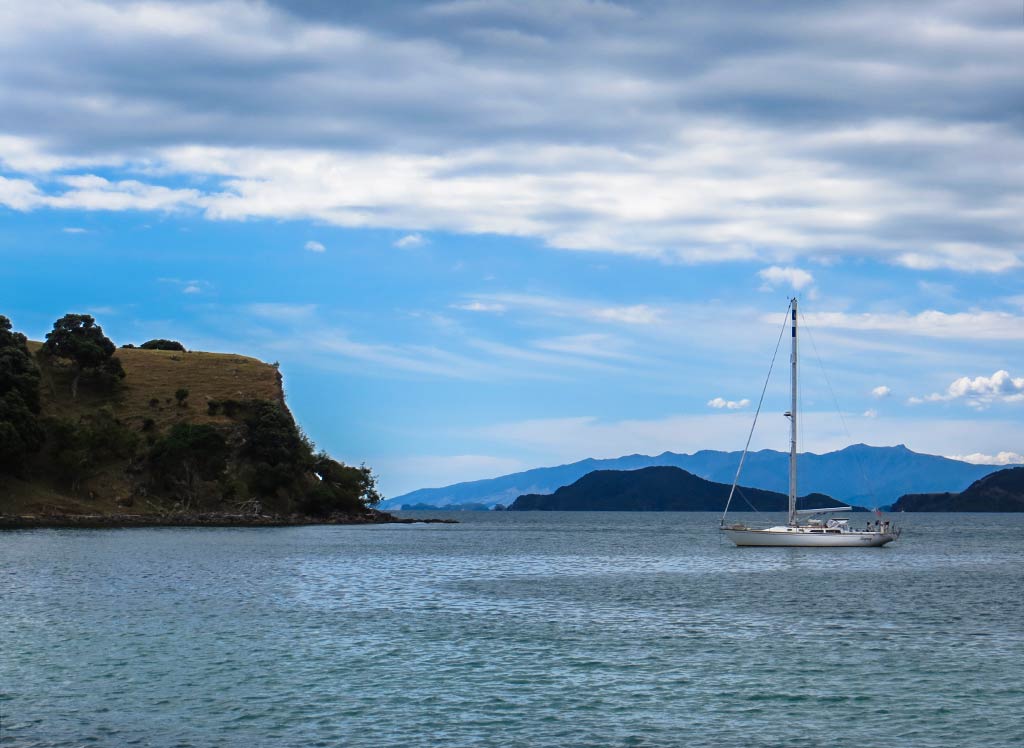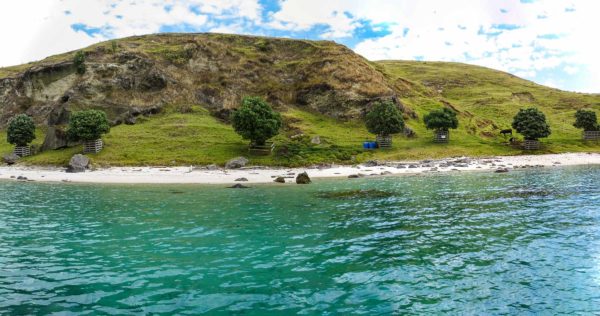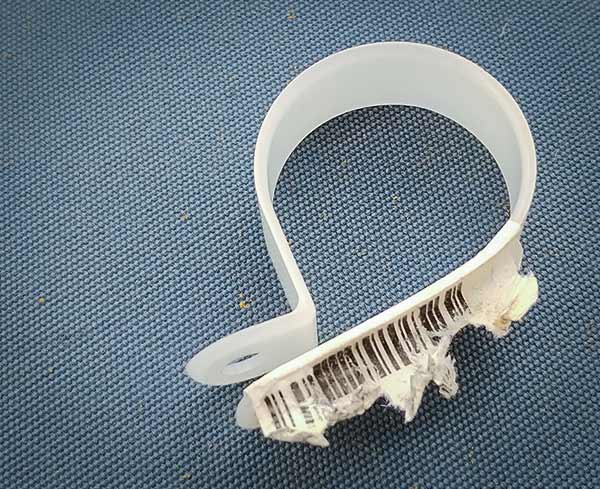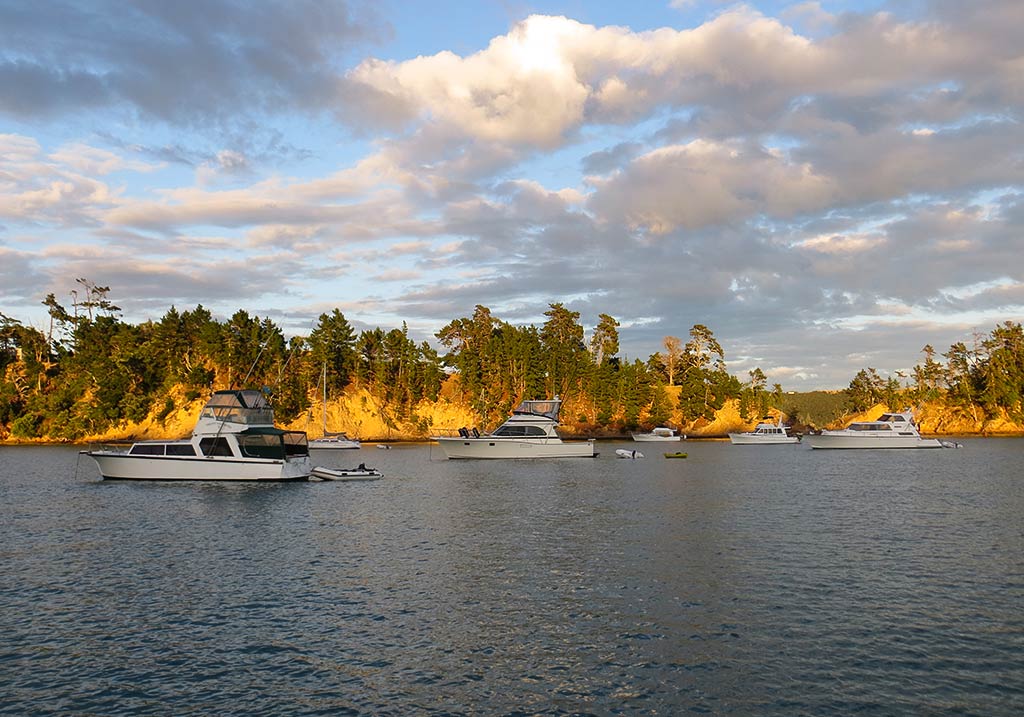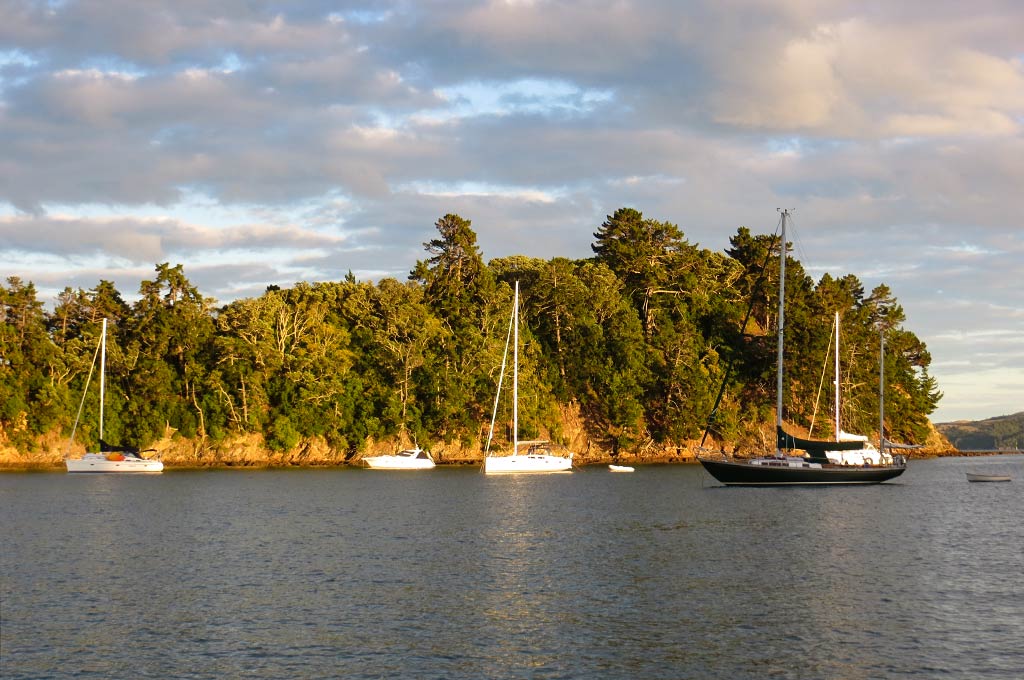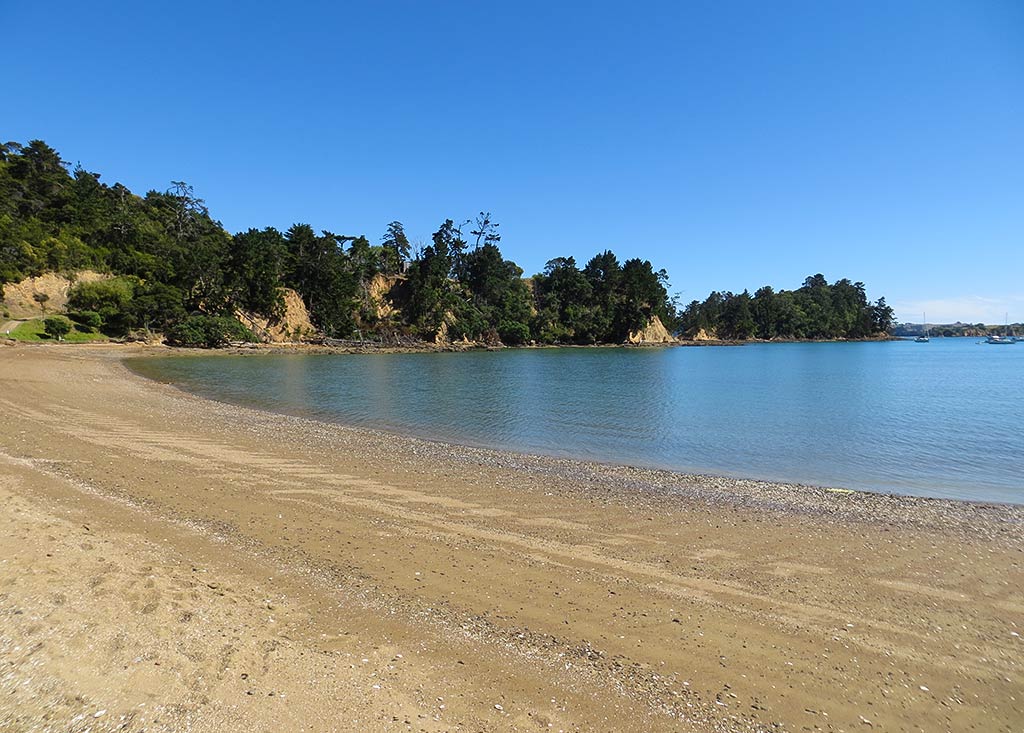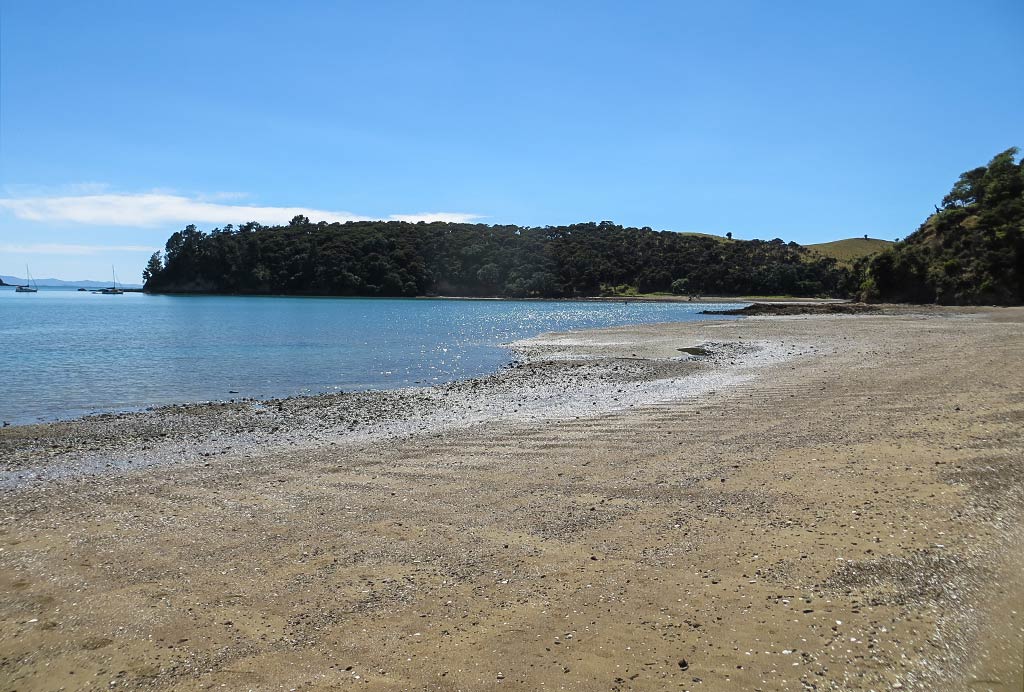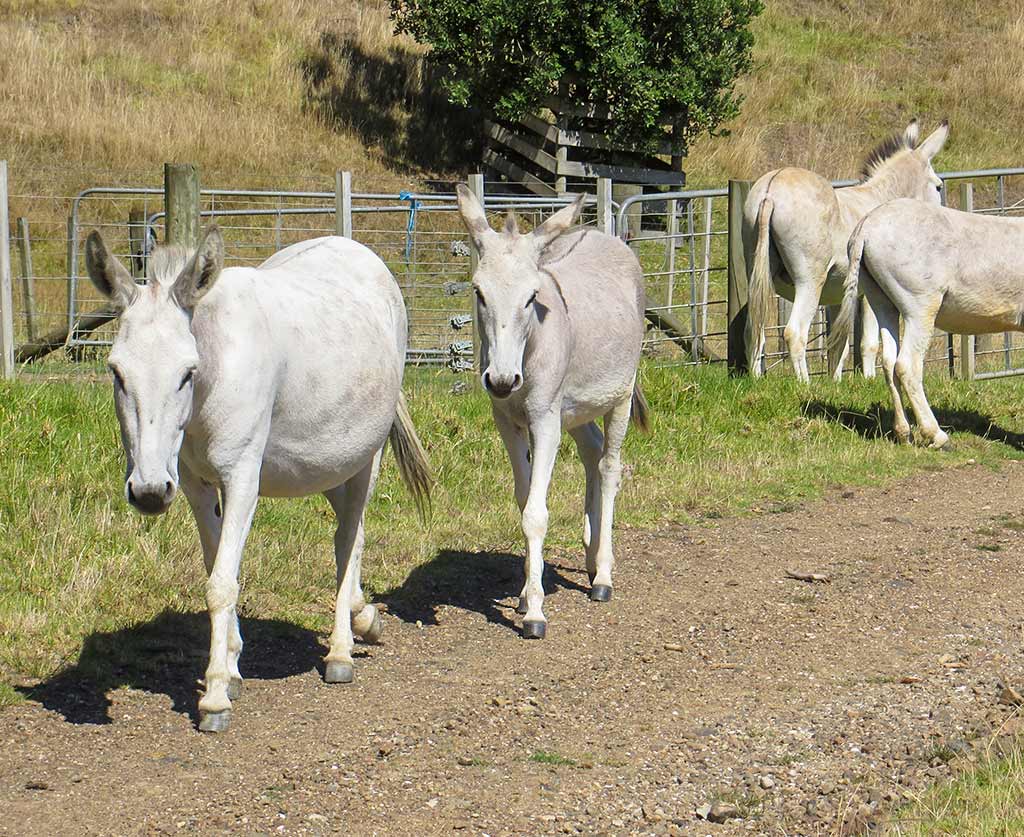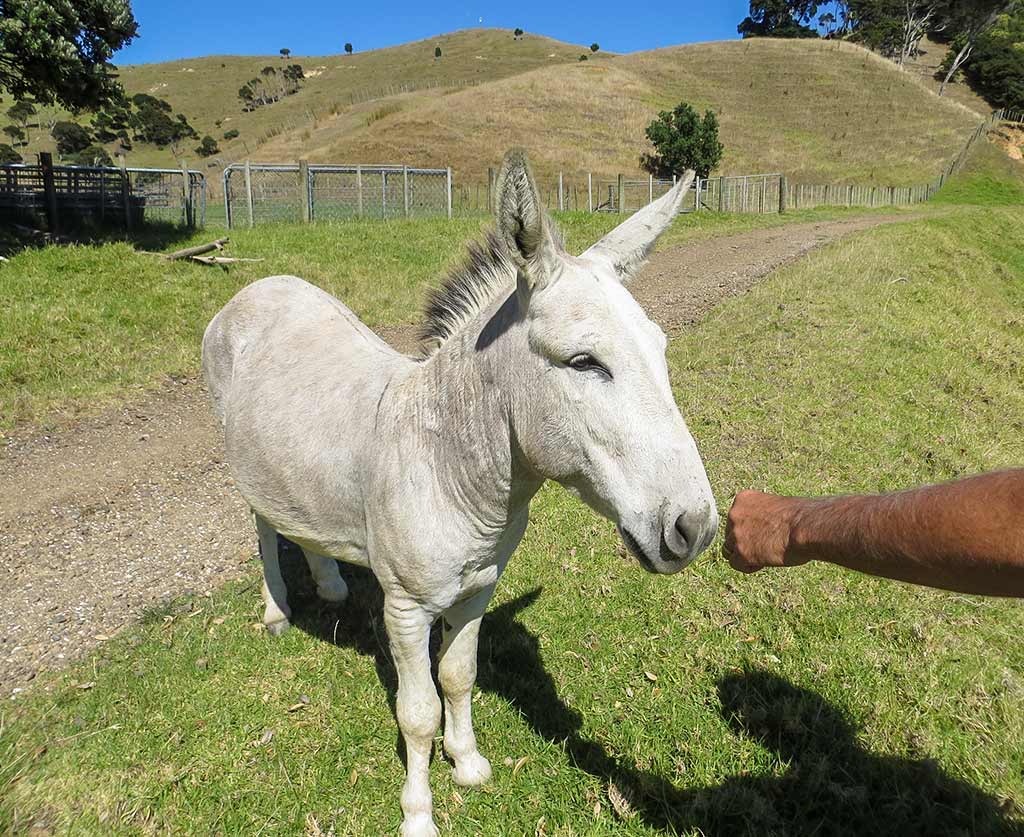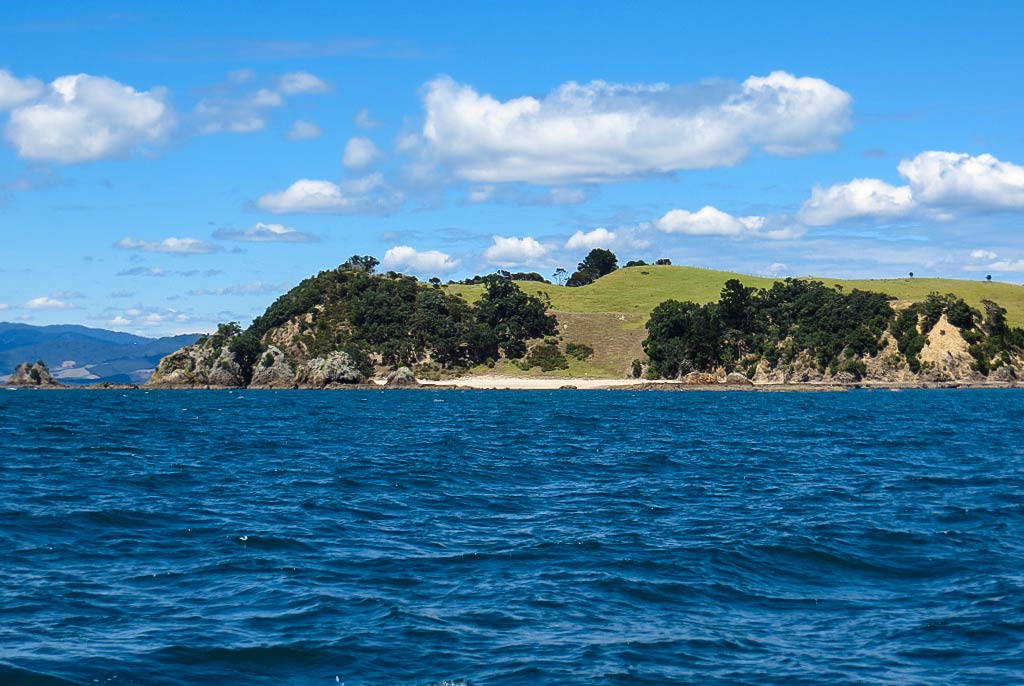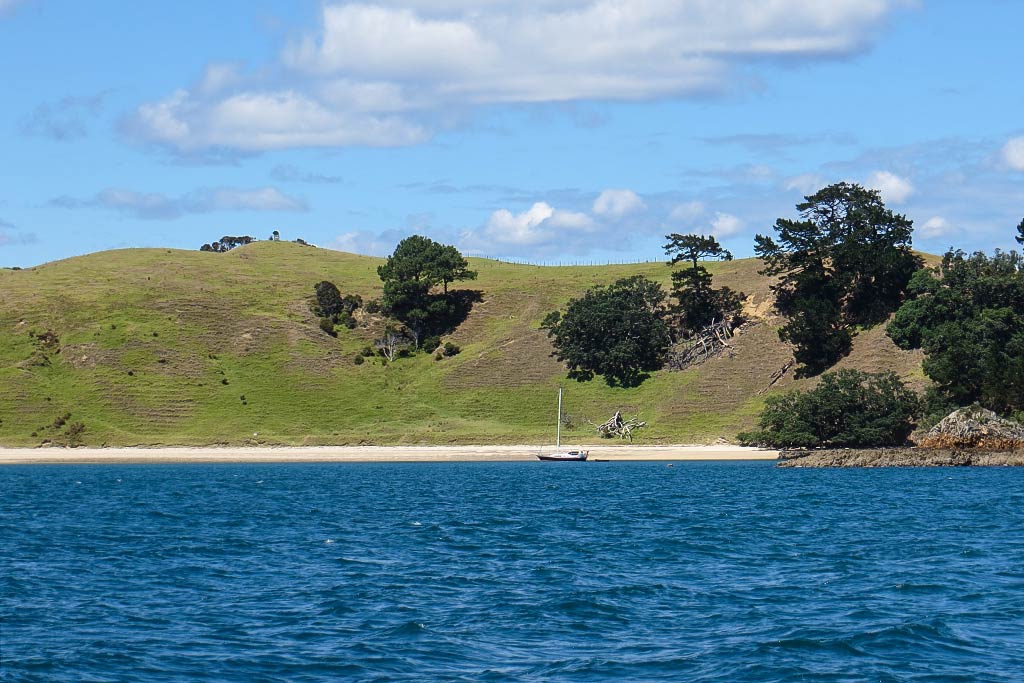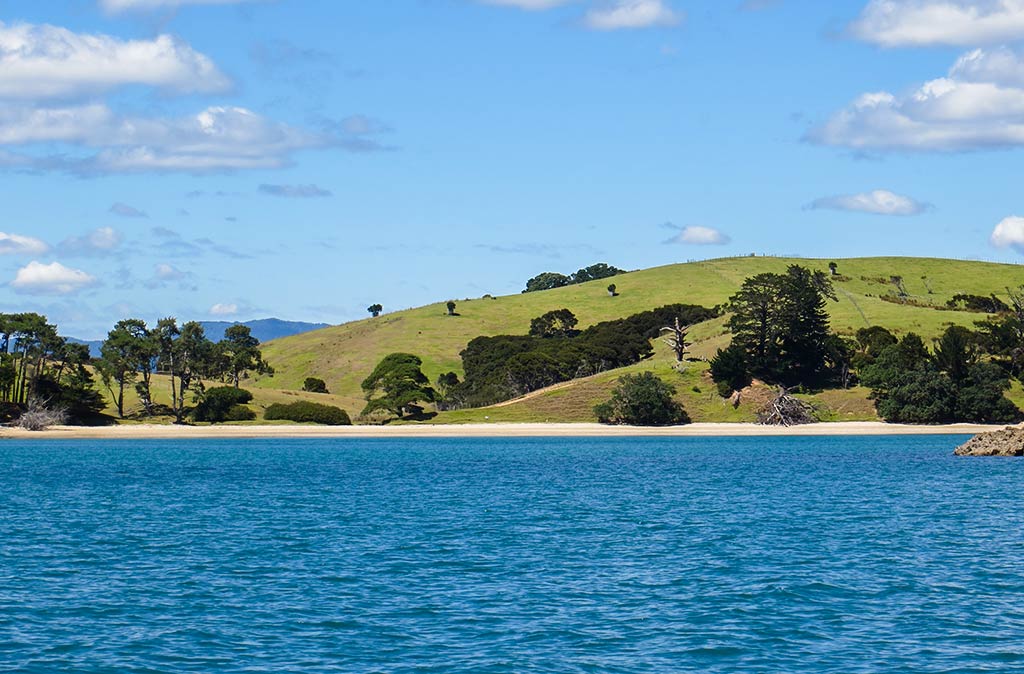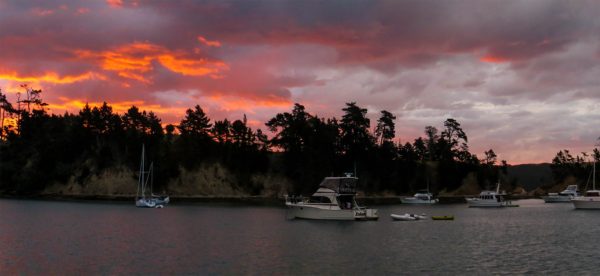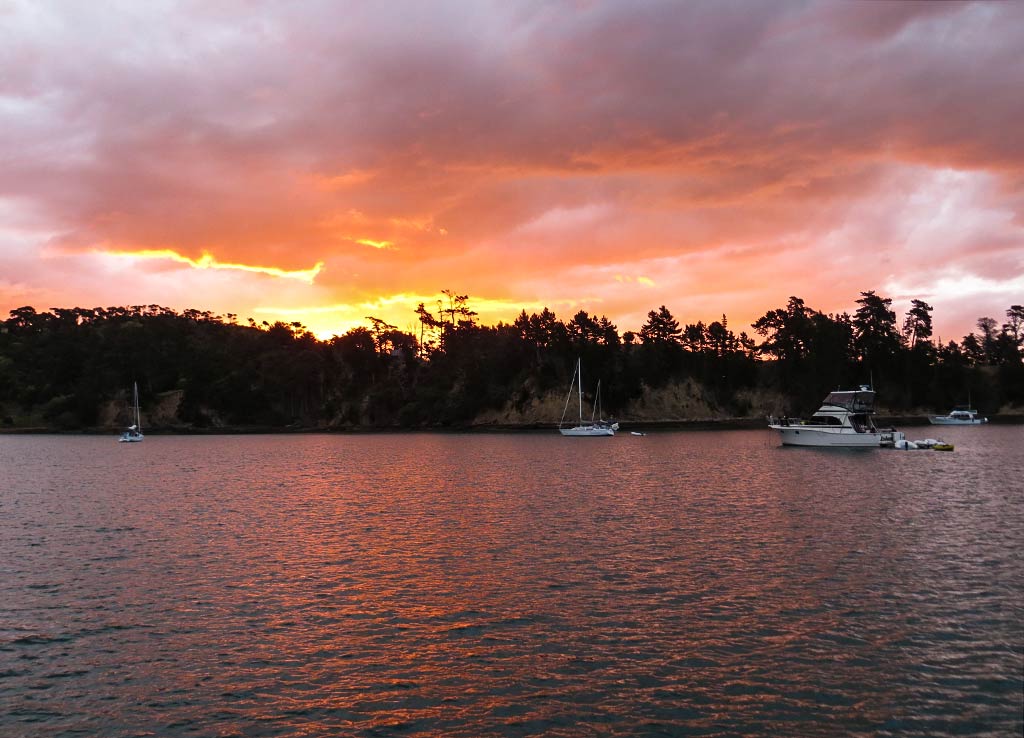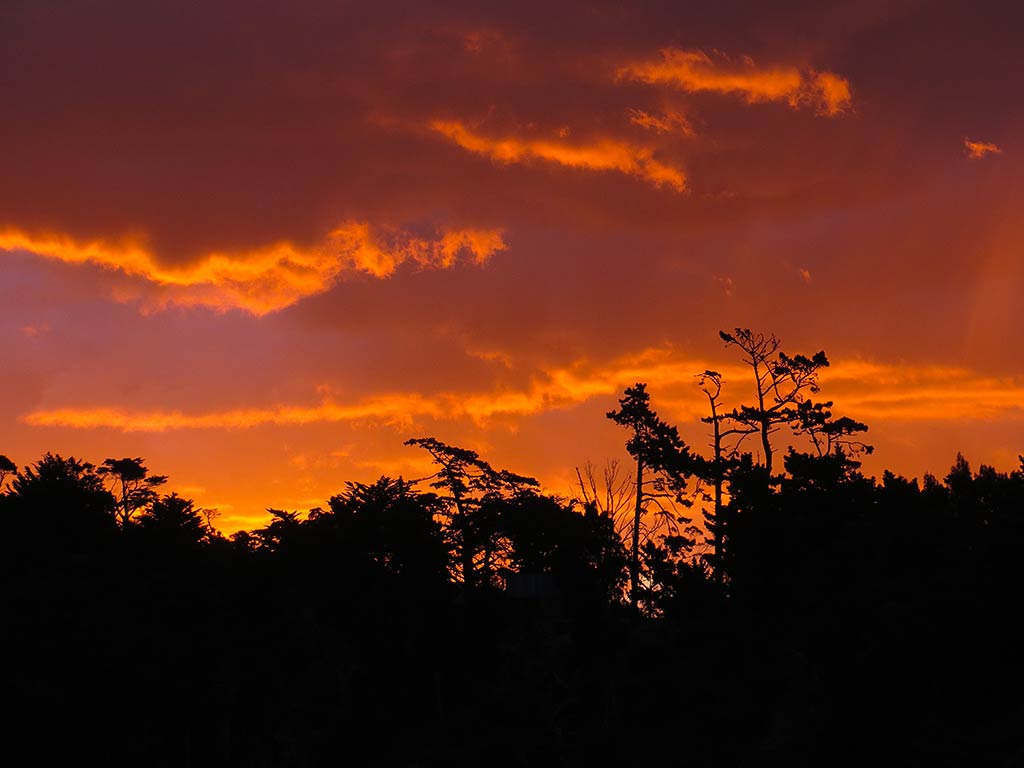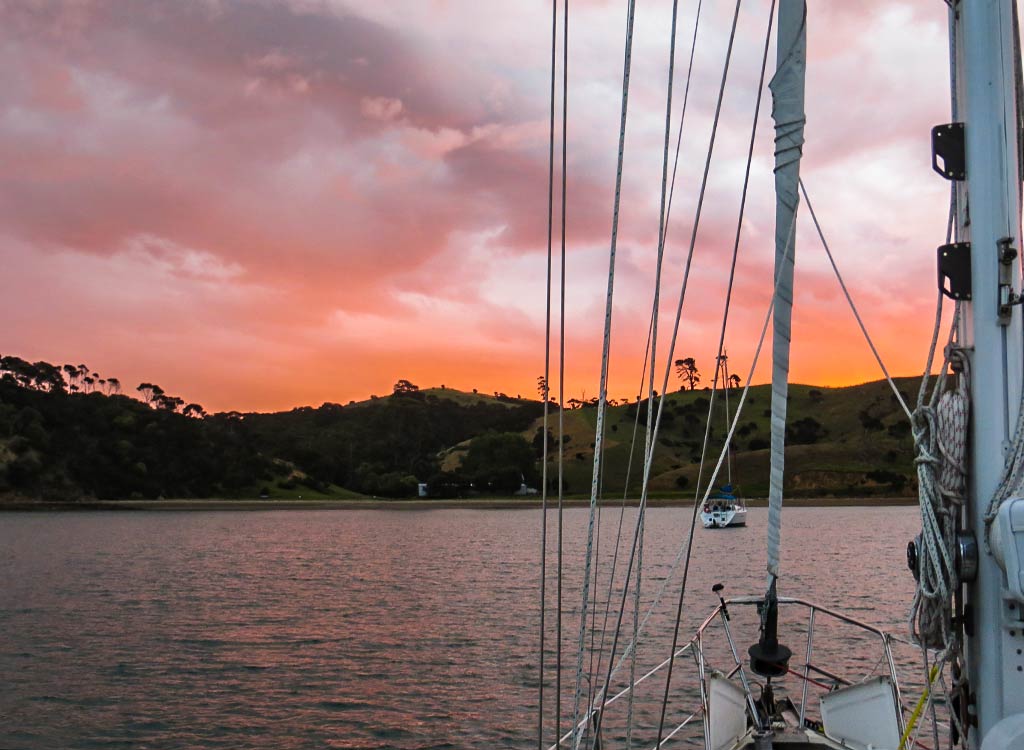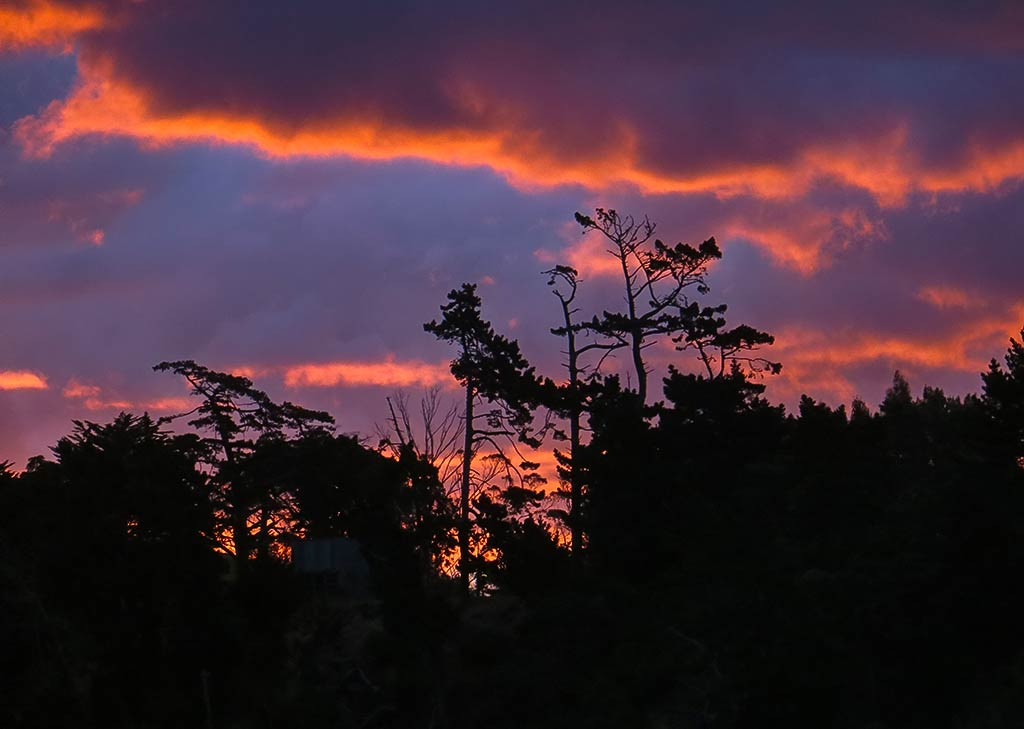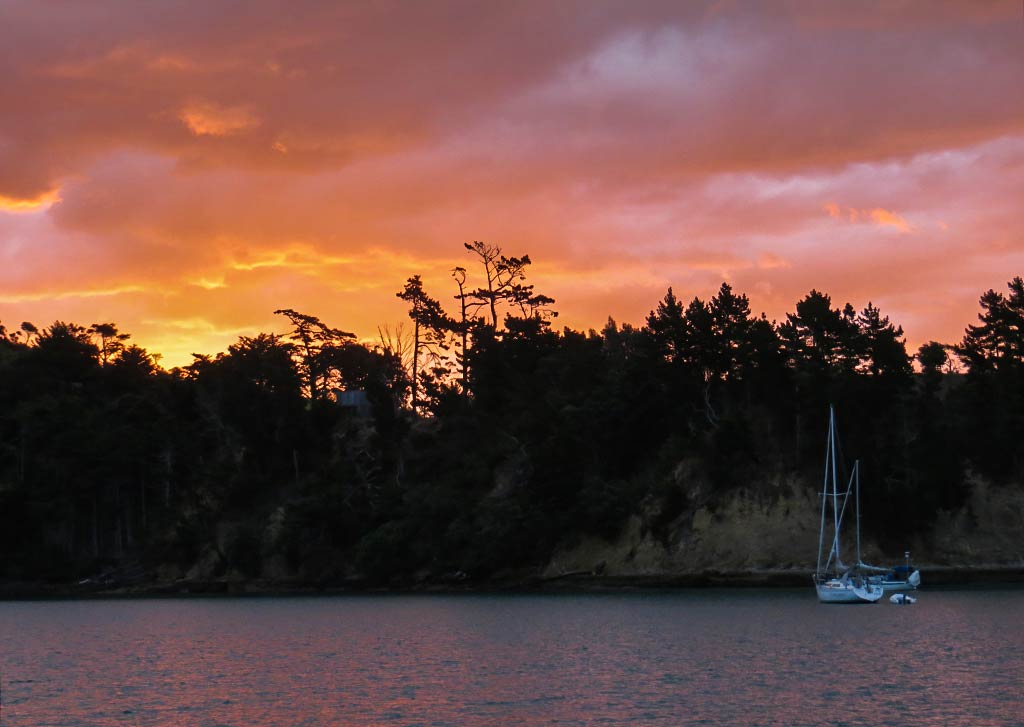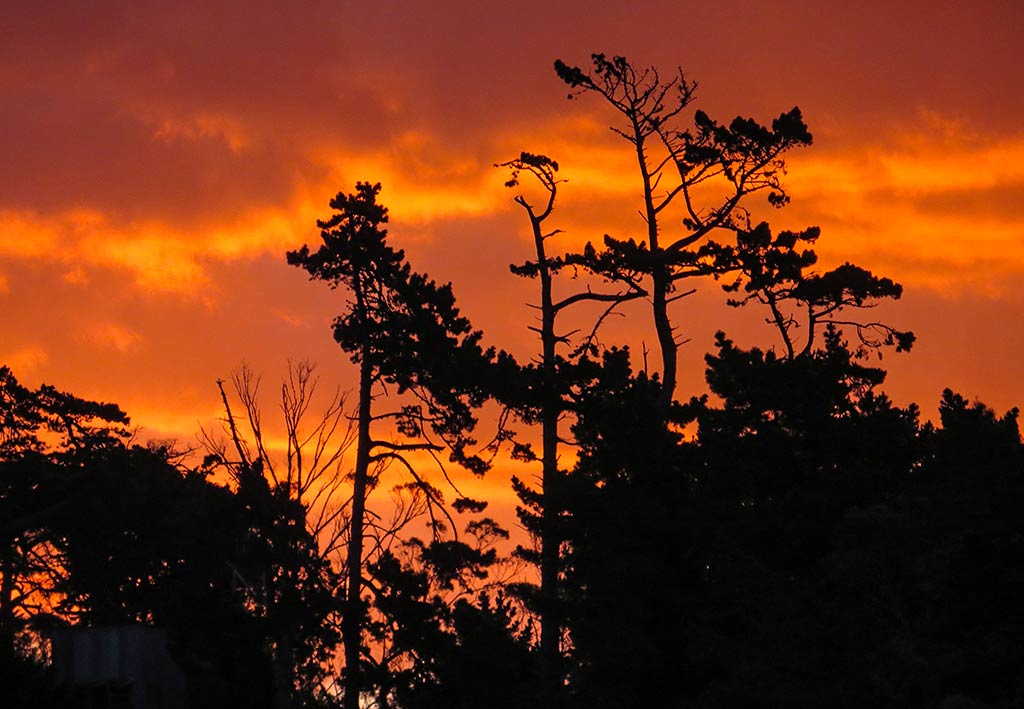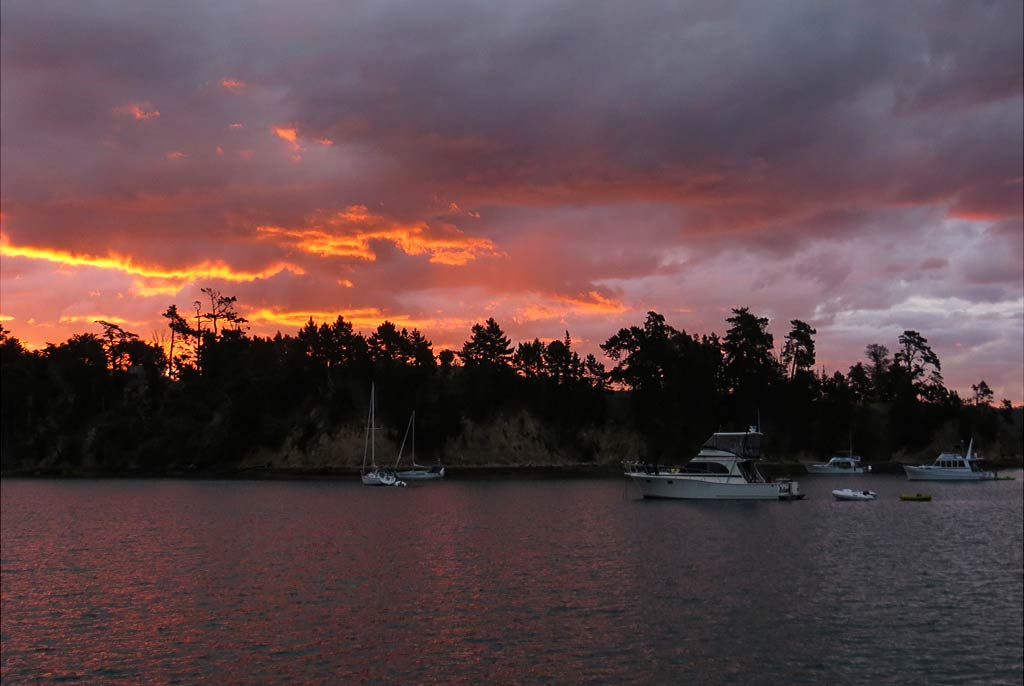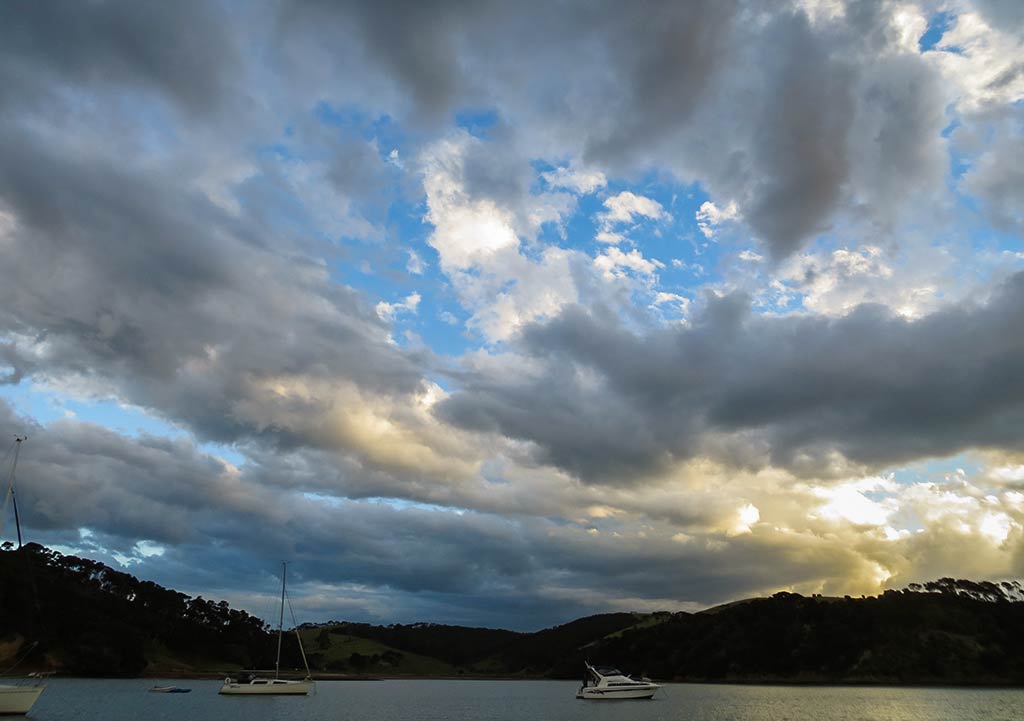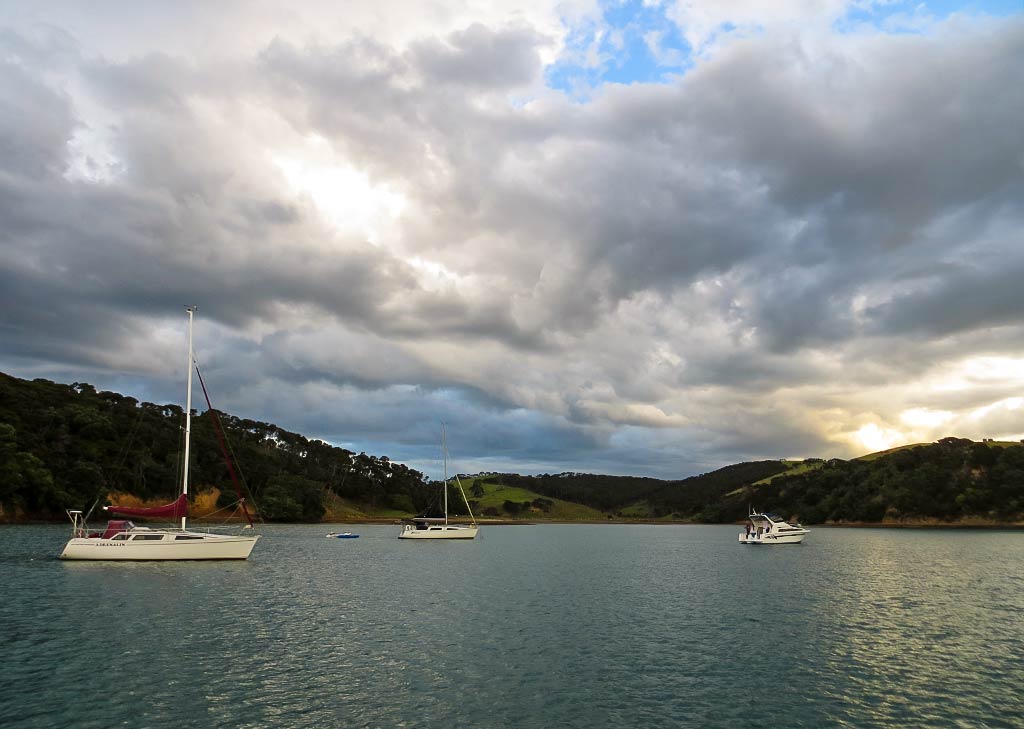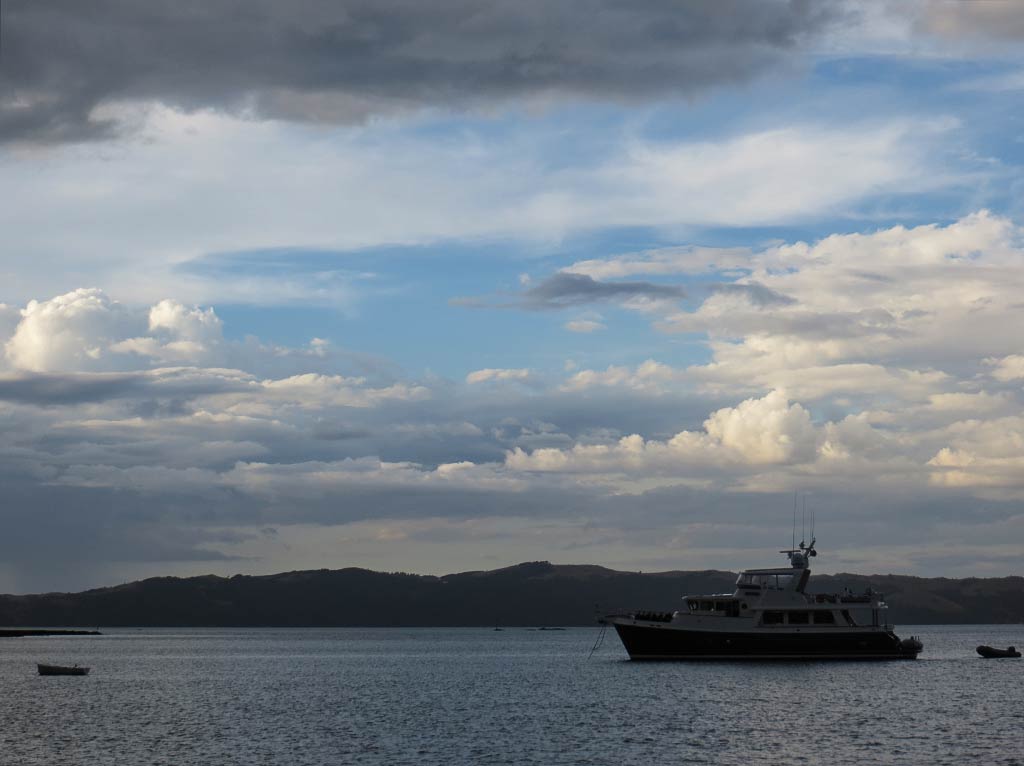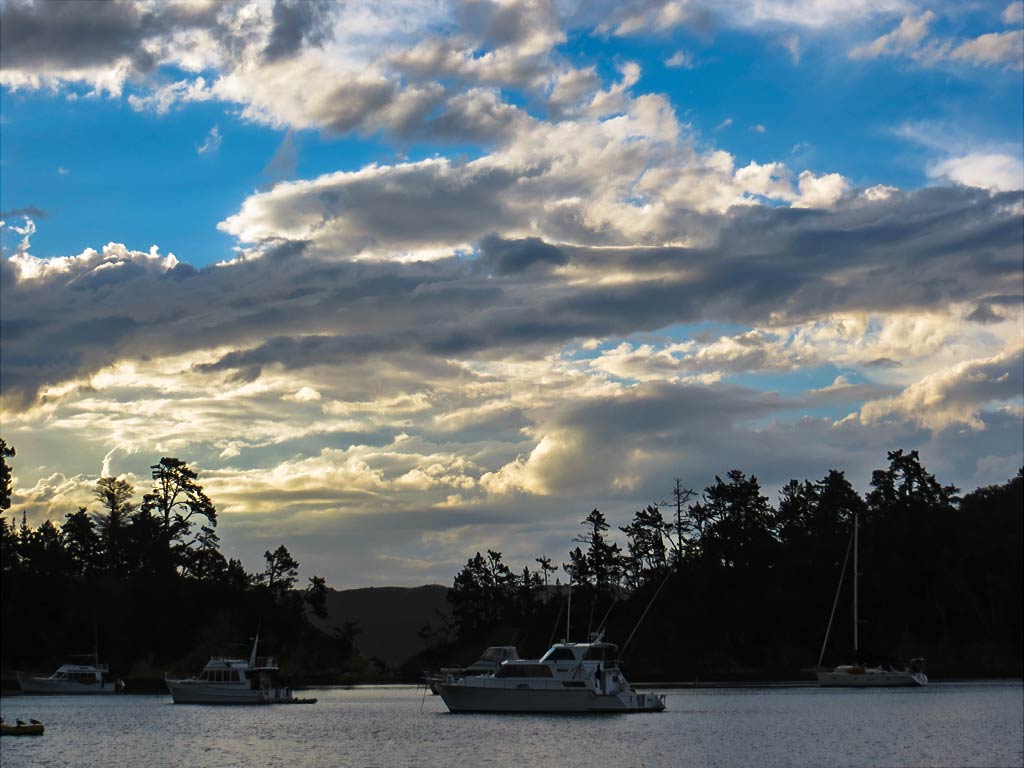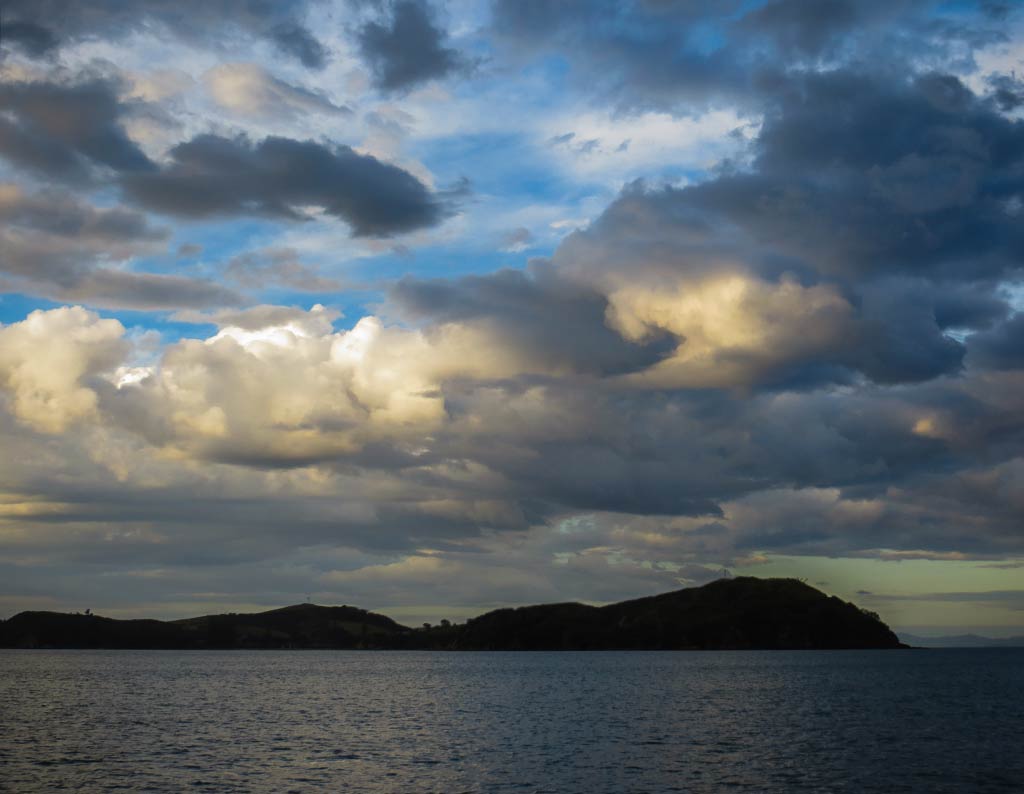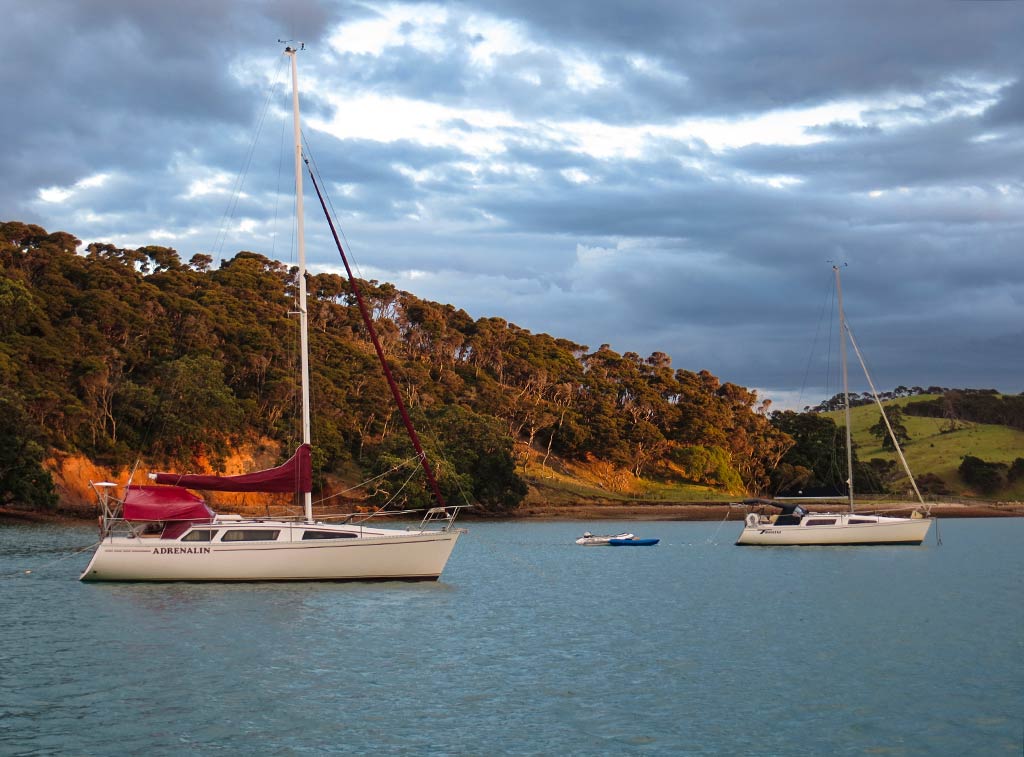February 10, 2014
The large and looming Coromandel Peninsula isn’t typically on a Hauraki Gulf cruise itinerary. It actually sits 10 miles east of the island group, not so much a part of the Hauraki Gulf as it creates the Hauraki Gulf, blocking the easterly swells that, save for this peninsula, would turn the Gulf’s serene island anchorages into surf breaks.
At 50 miles long and 20 miles wide this peninsula is already large, but with its rugged, mountainous terrain, vast areas of wilderness forest, sparse population, and few roads, it has remote, frontier feeling. It’s somewhat off the beaten path for travelers by boat or car, the kind of place one visits if they live in New Zealand, but too out of the way for most international travelers doing a big New Zealand tour.
We’d briefly visited one anchorage on the peninsula in 2013, but that was near its outer end, for convenience while waiting for suitable tide and wind so we could round the peninsula. Now, I hoped we could visit the intriguing anchorages lower down on its west side.
I was concerned to see whitecaps on the water after we left Ponui Island, and even more concerned to hear the weather forecast had changed to overnight southwesterly winds, not great for this area of the Coromandel. Rich worried we’d made a mistake leaving Ponui Island, but I quickly checked my list and was relieved to see there was one place that would be suitable for this weather, an island a half mile off the Coromandel coast called Rangipukea. It was very close to another anchorage I hoped to visit and an easy change of plan for the night. (Below, an interactive map.)
It took about 2 ½ hours to make the crossing. The ocean was whitecappy and spitty, splashing our rain-washed boat with salt water. But it was also sunny, warm, and not very rough; so I couldn’t complain. Meanwhile as we got closer to the Coromandel Peninsula, I was again impressed by its rugged beauty and sheer size. Its headlands, shoreline and off-lying rock islets were big, blocky and boulderous, with tall mountains rising dramatically behind it all. Below, some photos (click to enlarge).
Rounding the north tip of Rangipukea Island brought us into quiet and calm conditions. This island wasn’t very big, yet it echoed the Coromandel’s big scale with large cliff and rock formations. Rugged slopes were dotted with pohutukawa trees and, surprisingly, cows. We noted a couple of small boats anchored in the shallow north bay but continued around the corner to the bigger bay at the southeast end.
Below, a panorama photo of the area…
As we rounded the corner into that bay we were surprised by what appeared: green grass hills sloped down to a surprisingly white beach scattered with large black rocks, while pohutukawa trees clung to the sandstone cliff headland. To find such strikingly beautiful anchorage here was a delightful surprise.
Here’s a gallery with a few additional pictures…
After anchoring and taking some time to relax, we decided we should go walk on the beach. Up close, this beach had a lot of sea debris and driftwood, but it also had beautiful pastel blue and green water to go along with its white sand. We’d hoped to climb the grassy hill, but the presence of a couple of bulls changed our minds. We contented ourselves with a beach walk and climbing on a couple of the big black rocks. (Click any photo to enlarge.)
In all, this was truly a beautiful place, made more so when spots of sun peeked out from the cloudy sky, highlighting the colors of the sand and water. And always in the backdrop was the mountainous Coromandel, adding an element of drama to the view and making it feel different from the Hauraki Gulf islands.
As we took our dinghy back to the boat I turned and looked at the shore. It was late in the day but sunnier, and the water was becoming more green in the goldish light. This was the sort of spot where changing light could alter the feeling of the place.
Now, I was very glad for the southwest winds that caused us to stop here. Sometimes an inconvenient change of weather turns out to be a good thing. –Cyndi

